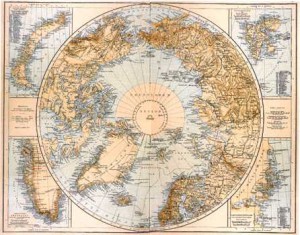 Kira Van Deusen writes that the Mongolian story about the origin of the Russians reminds her of another tradition:
Kira Van Deusen writes that the Mongolian story about the origin of the Russians reminds her of another tradition:
In October 1993 I was travelling in western Tuva, just north of Mongolia. In 1944 Tuva became part of the Soviet Union and is still part of the Russian Federation. Over the preceding centuries Tuva was ruled by various Central Asian khanates, and later by China and then Russia. For a brief period in the twentieth century it was an independent nation. Tuvans are traditionally herders of every kind of livestock, from reindeer to camels. They are famous for their unique multi-voiced overtone singing.
The Yenisei, one of the great rivers of Siberia, has its source in Tuva where two smaller rivers flow together. From there it flows 4131 km to the Arctic Ocean. In Tuvan the Yenisei is called Ulig Khem, or Great River, and it is central to many Tuvan legends, including this contemporary story.
As we drove along a dusty road leading to the village of Bora-shai, my host Anatolii Kuular pointed to a nearby mountain. “An interesting thing happened there,” he said. “It’s called Mount Compassion. At the end of the last century all the Russians were being driven out of Tuva or killed by local people. In one family everyone died except one young girl. She hid in a cave in that mountain. She lived there for several weeks in hiding, but then one day she was seen by a local herdsman when she went out for water. He sent one of his servants with a gun to kill her. But when he got to the cave he felt sorry for the girl and decided to help her. He built a raft and sent her off down the Yenisei, covered with branches.
“As the river goes through the Sayan mountains which form Tuva’s northern and western borders, the rapids are very difficult to negotiate. There is no boat transportation between Tuva and the outside world. No one knows how the girl got through the rapids on her raft, but we do know that she survived. Years later she came back to visit the land of her childhood.”
This story is told by Tuvans. I would love someday to hear it from the Russian girl’s side. Has anyone heard it?
I’m not sure where the Mongolians say their own people came from. But on Sakhalin Island the Nivkh people tell this story about themselves.
“At first there was only water. There was no land at all. The duck swam over the water. When the time came for her to give birth she saw that her eggs would sink if she laid them on the water. And so she pulled out her own fluff and made a nest. Her babies grew up strong and healthy and in their own time made more nests for their own babies. Gradually there got to be so many nests that they joined together and formed an island. This is how the earth began. First grass began to grow on the island and then trees. As their leaves and needles fell, the island grew into the big land. Then sap came from the larch tree. As its drops struck the ground they turned into people–the Nivkh. And so the Nivkh are called the sons of the larch. Their skin is reddish, like the larch. Their neighbours, the Orok, have white skin. It is said that they came from the pine tree.”
[Retold from Vladimir Sangi, Pesn’ o nivkhakh. Moscow: Sovremennik, 1989.]
MOTIFS:
- A. Origins:
A810, Primeval water: In the beginning everything is covered with water.
A814.11§, Earth from duck down nests on primeval water.
A1610.4.1§, Origin of peoples from tree sap.
A1610.4.1.1§, Origin of Nivkh from larch sap. (Cf. A1611.10§, Origin of various Far Eastern peoples.)
A1610.4.1.2§, Origin of Orok from pine sap. (Cf. A1611.10§, Origin of various Far Eastern peoples.)
A1611.10§, Origin of various Far Eastern peoples.
